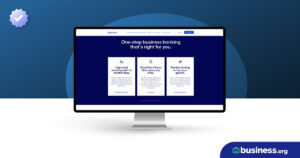💸 See if your business qualifies for a tax credit worth up to $26k per employee. 📞 Call Now: 855-979-9597
How to File Taxes as an Independent Contractor
We are committed to sharing unbiased reviews. Some of the links on our site are from our partners who compensate us. Read our editorial guidelines and advertising disclosure.
Whether you started driving for Uber last year or you’ve run a graphic design business out of your basement for a decade, paying the right amount in self-employment taxes is crucial. Fortunately, filing taxes as a self-employed individual isn’t as tricky as it sounds. Below, we walk you through the tax-filing process.
How to file taxes as an independent contractor
By signing up I agree to the Terms of Use and Privacy Policy.
1. Gather 1099 forms from your employers
Tax form 1099-NEC (nonemployee compensation) lists the income you earned as an independent contractor working for a specific business. To file taxes correctly, you need to track down 1099 forms from businesses you worked with last year that paid you more than $600. (You still need to file taxes on all of your income, but only businesses that paid you over $600 are required to mail you a 1099-NEC.)
Starting with the 2020 tax season, Form 1099 comes in a few different flavors, though each variation serves the same purpose of recording and reporting your income. Most contractors should receive Form 1099-NEC (nonemployee compensation).
However, you could receive a 1099-K if you worked for a business that paid you at least $20,000 over a course of at least 200 individual payments.

- Outsource your bookkeeping. Merritt Bookkeeping's affordable outsourced bookkeeping saves business owners time and money.
- Opt for all-in-one business checking. Found is the perfect match for teams of one looking for smart tax tools.
- Get better accounting software. Quickbooks is our top pick for businesses looking for comprehensive features that simplify tax season.
2. Calculate your business deductions
Once you’ve gathered all your records, you can calculate your potential tax deductions. Many of these expenses can be deducted from your total taxable income, which lowers the amount of taxes you owe. Depending on the type of business you run, you should consider making deductions in the following categories:
- Home offices
- Educational materials and experiences, including seminars and conferences
- Gas expenses for business-related traveling
- Health insurance
- Internet and phone costs
Bear in mind that you need to make completely accurate deduction calculations—an educated guess isn’t good enough for the IRS. So how exactly do you do that? Read IRS Publication 535, which explains which expenses are (and aren’t) eligible for deductions. Publication 535 also tells you how to calculate deductions. Some types of exceptions just require you to tally receipts (which you’ll want to store for several years in case of an audit). Others, like home office deductions, require you to use a formula to write off the right deduction amount.
We recommend consulting with an accountant or tax advisor who can help you calculate deductions and help you in the event of an audit. Alternatively, tax-filing software includes instructions and information on how exactly to calculate your specific business deductions.
Calculating tax deductions is only possible if you track your expenses throughout the year. If you have too many expenses to track by hand, most accounting software for the self-employed includes expense tracking, receipt scanning, and even automatic tax categorization. Some, like QuickBooks Self-Employed, include built-in mileage tracking and IRS-ready reporting forms.
3. Fill out your tax forms
Once you’ve used your 1099 forms to accurately calculate your income, you’ll need to fill out a few additional tax forms to file with the IRS:
- Form 1040. This form reports your individual income to the IRS. Sole proprietors, freelancers, contractors, and any other self-employed persons will file their income taxes with Form 1040.
- Schedule C. This form attaches to Form 1040 and breaks down your business’s profits and losses over the course of the year.
- Schedule SE. This form also attaches to Form 1040. It helps you calculate the self-employment tax, or the combined Social Security and Medicare taxes all contractors are required to pay. The self-employment (SE) tax is 15.3% of your annual income.
4. File your taxes
You’ve assembled all your documents and filled out all your forms. Now it’s finally time to file. The IRS explains all your filing options, including a list of IRS-approved electronic filing options, such as tax software companies like TurboTax and H&R Block. While you can print out all your tax forms and send them and your payment via mail, we (and the IRS) strongly recommend filing online instead. It’s faster, easier, and more secure.
As for paying your taxes, the IRS’s online payment portal gets the job done the quickest. If you’re using tax software, you should be able to pay through the software itself. And if you’re working with an accountant, they can help you make the payment.
Most self-employed individuals, including freelancers and sole proprietors, are required to pay estimated taxes quarterly and file a tax return annually. You can learn more about who should pay quarterly taxes on the IRS’s estimated taxes info page.
The takeaway
Dealing with taxes after a bad year is the furthest thing from fun we can imagine, and no one can blame you for dreading the prospect. But if you stick to the four straightforward steps listed here, you should be able to get your taxes done with the minimum amount of stress possible. Good luck—and don’t forget to celebrate once you’ve finished filing.
Need to file taxes as part of an S Corporation or LLC, not as an independent contractor? Our guide to paying small-business taxes will help.
Independent contractor taxes FAQ
You can claim a tax refund from the IRS whether you're self-employed or traditionally employed.
The self-employment tax is 15.3% on the first $147,000 in net profits, plus 2.9% of anything earned over that.
If you’re going to owe more than $1,000 on your annual taxes for self-employment income, you should make quarterly tax payments. A good rule of thumb is to prepay at least 90% of your current year taxes (or 100% of the amount you paid the previous year). If you skip quarterly payments and instead pay a lump sum for the entire year, you could owe a penalty for underpayment.
If you don’t have your tax paperwork done in time, you can request a tax-filing extension online for free. However, note that this extension grants you more time to file, not extra time to pay taxes. In other words, you still have to pay your taxes on time—you’re just delaying the paperwork by a few months.
The easiest way to get an extension is by paying your estimated taxes using the IRS’s online payment portal. Just look for the extension tab while moving through the portal. Tax extensions bump your paperwork-filing deadline back six months. If you apply for an extension, expect to have your paperwork in order no later than October 15, 2021.
Unless you file for an extension, taxes for independent contractors are due on April 18, 2023. Typically, it is April 15, but this next year, tax day falls on a weekend.
Disclaimer
At Business.org, our research is meant to offer general product and service recommendations. We don't guarantee that our suggestions will work best for each individual or business, so consider your unique needs when choosing products and services.




